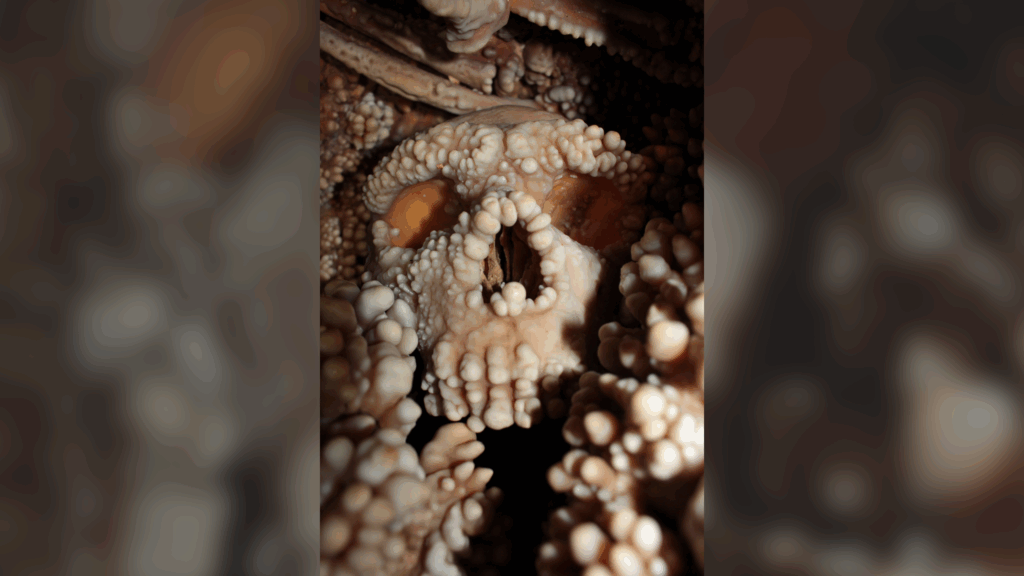
A groundbreaking digital analysis of the well-preserved nasal bones of a Neanderthal skull has cast doubt on a longstanding theory about the evolutionary function of Neanderthal noses. The skull, known as the “Altamura Man,” is one of the most complete Neanderthal skeletons ever discovered, unearthed in 1993 in a cave near Altamura, southern Italy. The findings, published on November 17 in the journal PNAS, suggest that Neanderthals’ noses may not have evolved primarily to warm and humidify cold air.
The Altamura Man has remained in situ, encased in a thick layer of calcite, also known as “cave popcorn,” to prevent damage to the bones. This Neanderthal likely perished between 130,000 and 172,000 years ago, leaving behind a uniquely preserved nasal cavity that offers new insights into Neanderthal anatomy.
Challenging the Cold Climate Adaptation Theory
According to Costantino Buzi, a paleoanthropologist at the University of Perugia and lead author of the study, the general shape of Neanderthal nasal cavities follows a consistent trend of enlargement over time. However, the new research suggests that these large nasal openings were not uniquely adapted to cold climates as previously thought.
“The general shape of the nasal cavity and nasal aperture in Neanderthals follows a quite constant trend,” Buzi explained. “In general, it starts large but gets larger during their evolution, with very large nasal openings in the last populations of the species.”
Previous theories posited that Neanderthals had large noses and sinuses to warm and humidify the air in cold, dry environments. However, these theories were based on approximations, as the delicate nasal bones were often broken or missing in other Neanderthal skulls.
Virtual Paleoanthropology: A New Approach
Buzi and his team employed “virtual paleoanthropology” techniques to study the Altamura Man without removing it from its cave setting. Using endoscopic probes, they captured video footage from inside the nasal cavity and created 3D models of the nose bones. This innovative approach revealed that the internal nasal structures of the Altamura Man were not significantly different from those of modern humans.
This discovery challenges the notion that Neanderthal noses were specially adapted to cold climates. Todd Rae, a paleoanthropologist at the University of Sussex, noted that two of the three previously proposed unique features of the Neanderthal nasal cavity were absent in this specimen. Rae emphasized that this finding highlights previously unrecognized variability within the species.
“This shows that there is variation in the species that was not previously known,” Rae stated.
Rethinking Neanderthal Anatomy
The study’s findings suggest that the size of Neanderthal noses might not be linked to cold-weather adaptations. Rae pointed out that wide noses are common among earlier Homo species, and most Homo sapiens, except for a small proportion of northern European and Arctic populations, also have wide noses.
“All earlier species of Homo have wide noses,” Rae explained, “and most Homo sapiens have a wide nose — only northern European/Arctic people don’t, a vanishingly small proportion of the species.”
Buzi suggested that the Neanderthal nose should be seen as an efficient mechanism for adjusting the temperature and humidity of inhaled air, necessary for sustaining their large bodies. He proposed that various environmental pressures and physical constraints shaped the Neanderthal face, resulting in a functional adaptation for the harsh climate of the European Late Pleistocene.
The implications of this study extend beyond the specifics of nasal anatomy, prompting a reevaluation of how Neanderthals adapted to their environments. As more discoveries emerge, the understanding of Neanderthal biology and evolution continues to evolve, offering deeper insights into the complexities of our ancient relatives.






